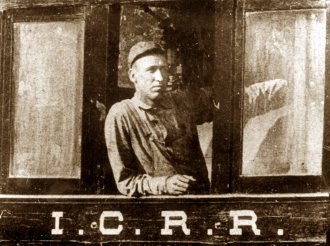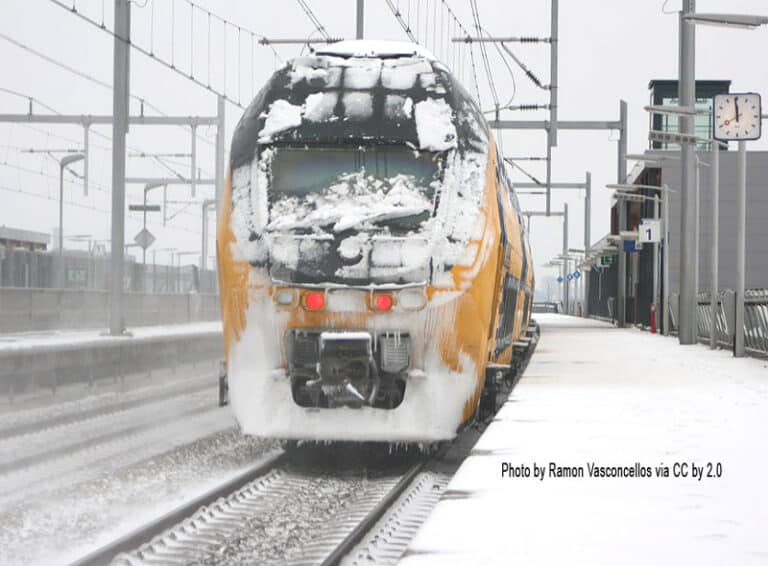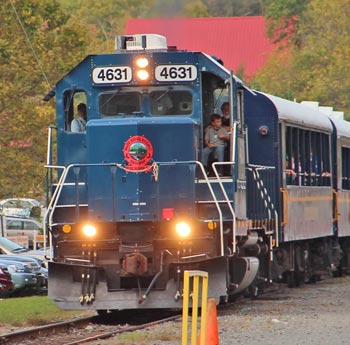My Day as a Log Train Brakeman in the North Georgia Mountains
Millennials might call this a “Volunteer Vacation”, they seem to have a term for everything. I just call it interesting and enjoyable. I worked a Monday as a brakeman on the Georgia Northeastern Railroad (owner of the Blue Ridge Scenic Railway). I spent the day as the second crewmember on a log train out of Blue Ridge, Georgia.
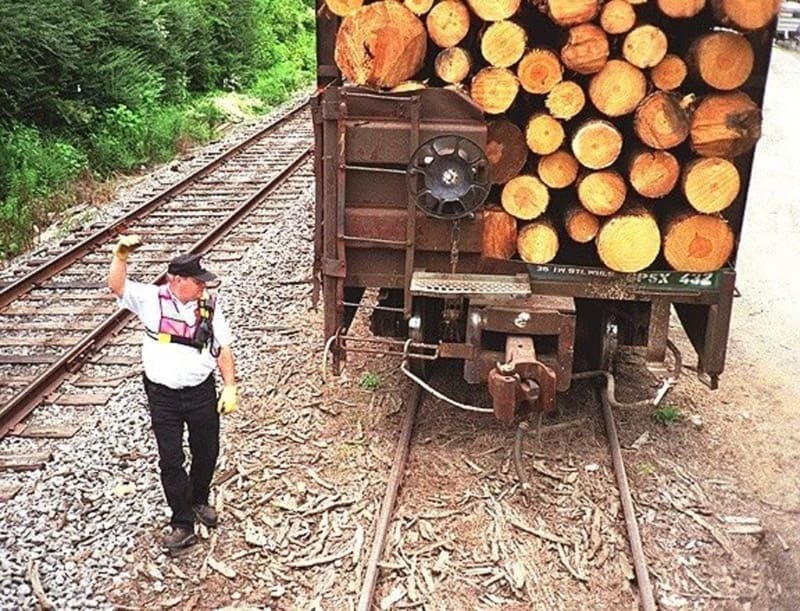
It was a short train, only three cars long, but we carried enough logs to keep 12 trucks off the highways. The logs were mostly pines, cut in the Cherokee National Forest. Yes, you read that correctly, the trees were harvested from a national forest. It is a booming business in the North Georgia, East Tennessee, and Western North Carolina Mountains.
The U.S. Forest Service contracts with local loggers to clear-cut 40-acre sections, which are then re-seeded. The logging is done totally by machine because the trees are rarely over several feet in diameter. The logs are brought by truck to the wood yard in Blue Ridge where the GNRR has a siding. Hydraulic cranes lift the logs from the trucks and on to the log cars. The wood yard can easily fill five or six cars a week.
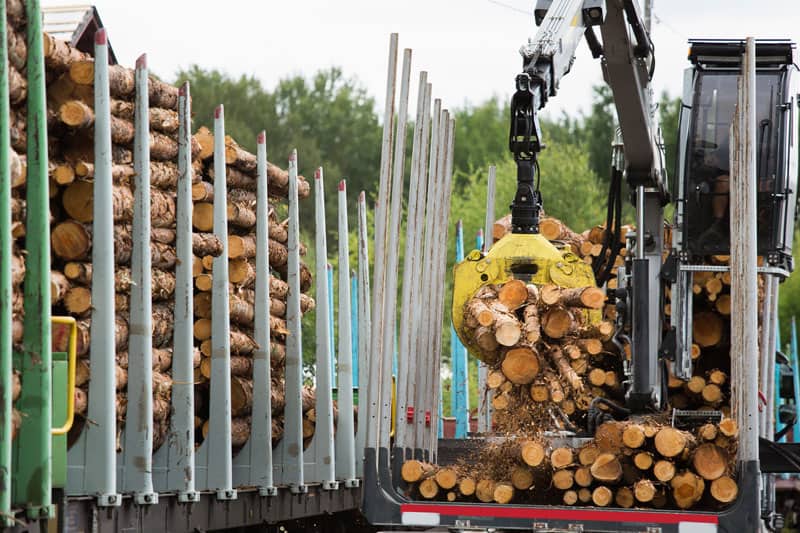
On Mondays, after the Blue Ridge Scenic Railway has closed for the week, we use its locomotives to pull the loads out of the wood yard and take them south to Whitestone, Georgia. Another train crew will work north from Tate, Georgia to pick up the log cars and take them to Tate. The logs eventually end up in Marietta where they are turned over to the CSX Railroad.
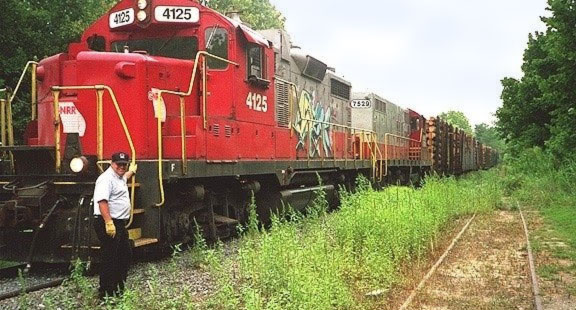
We take empty log cars left in the siding by the Tate crew back to Blue Ridge and deliver them to the wood yard. The round trip takes about seven hours. The speed limit is ten miles an hour except for a 5-mph limit across the Turniptown Creek trestle and a sharp curve a little further south where a log train derailed back in April. The other operational challenges are Cherry Log Hill and Kudzu Hill.
Wet rails, kudzu leaves, and the steep grades often force us to back down these two hills (or slide in some cases) and try to get a running start. The locomotive will be screaming as we start up the hill, but we’ll be lucky if we’re going 2 miles an hour when we crest the grade. And then it’s a quick brake application to get the train under control on the downgrade. The roar of the diesel engine is quickly replaced by the hiss of air as the brakes apply. You watch the speedometer, waiting for the brakes to take hold.
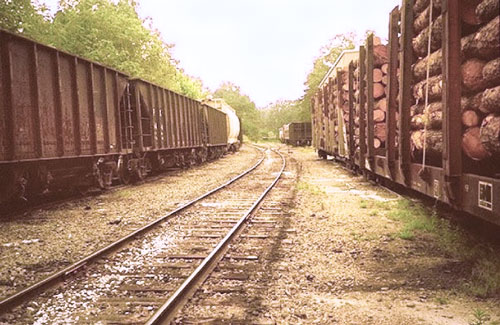
Our route takes us through Ellijay, the only population center along the route. Ellijay is named for a Cherokee chief and is the point where the Ellijay and Cartecay rivers join to form the Coosawattee. We follow the Coosawattee southwest for a short distance, then turn south and begin the long climb up to Ella Gap. Ella Gap skirts Talona Mountain and brings us down to Talona Creek where we follow the Talona Valley to Whitestone, site of a huge marble quarry. We drop off one natural resource, trees, at a place where they mine another natural resource, marble. The marble mine is an open-pit operation now, but at one time the mine went under the mountain following the marble seam. We park the engine next to an entrance to the mine and enjoy the cool 65-degree rush of air that constantly flows out of the mine.
After shoving our loads into the south end of the siding at Whitestone, we pull four empty cars out of the north end and retrace our route back to Blue Ridge, passing by the tree that blocked the tracks on our southbound leg. When your railroad runs through the woods, it is prudent to carry a chainsaw in the locomotive.
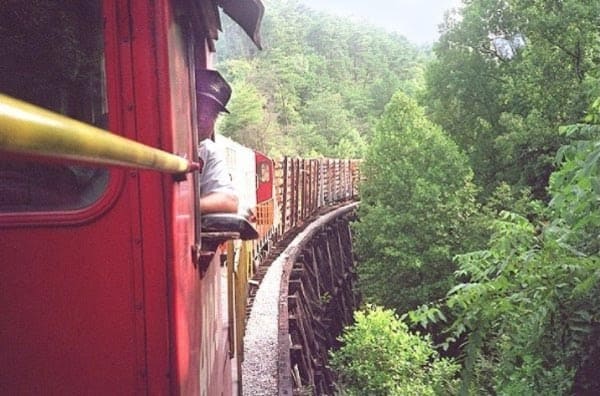
On the return trip I finally got to enjoy the peanut butter and jelly sandwich the engineer’s wife packed for me. Riding through the woods, with sunshine filtering through the trees, listening to the sound of steel wheels on steel rails, munching on that PBJ sandwich, and swapping stories with the engineer made for a perfect day.
I had to take vacation from my regular job to work the log train; it was a tough decision – spend the day sitting at my computer writing reports or spend the day working with Carl the engineer on a train in the North Georgia Mountains. It was a no-brainer.



